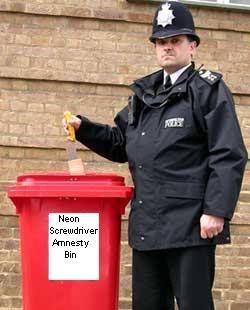- Joined
- 22 Oct 2007
- Messages
- 31
- Reaction score
- 0
- Country

I've just had the debate with a collegue with him saying neon screwdrivers are not reliable up ladders coz theres no earth path or something.
I said that when using a neon screwdriver, I act as the earth for it, so doesn't matter if I jump up in the air the neon will still light up.
Who's right???
I said that when using a neon screwdriver, I act as the earth for it, so doesn't matter if I jump up in the air the neon will still light up.
Who's right???

